To Mali and to you, I say, "YES!" And I'd like to add this... This teacher is making a living, supporting my family, and, with my loving husband, raising a daughter. This teacher has dreams in and out of the classroom. This teacher has always wanted to be a teacher and has never regretted this journey. This teacher makes lesson plans and activities. This teacher makes songs to make kids laugh before they go into standardized testing mode. This teacher has made cookies and limonada de coco and has sewn book bags and made holiday tree ornaments. This teacher has made mistakes. Those split-second decisions we teachers often face...yeah, I've hit some and I've missed some. This teacher makes a memory for many of those moments of 'success' and most of those moments of 'failure.' This teacher will, surely, make more mistakes. And she'll work to make peace with herself. This teacher loves the company of other teachers. She feels most at home in the classroom. This teacher worries about the state of education in the US and still knows that there is extraordinary work done - every minute of every day - by American teachers and students. This teacher is making a life as an educator, for better and worse (most days and years have been so good), richer and poorer (well, teacher pay could and should be improved), in sickness (over the years think pink eye, flu, strep throat, hand-foot-mouth disease - all shared with and by students and colleagues) and in health (oh, it feels so good to feel good), as long as I can teach with joy, hope and the belief that I can make a difference. I've learned many lessons, invaluable lessons, here in Finland. As a teacher, I rely on being competent and confident, and, often, and not necessarily for the best, I rely on being a one woman show. My months in Finland have been steeped in asking for help. For my project, this means asking for access to schools, time with teachers and students, and it has meant asking question after question so that I can make sense of what I'm seeing and experiencing. I think some schools in Finland have Visitor Fatigue. After all, there have been throngs of people from all over the world wanting to know the secret to the success of Finnish schools. I've made many cold calls to schools - Hi, I'm Jennifer. I'm a Fulbright Teacher. Can I come visit? I've gotten more yesses than nos. And I've been overwhelmed by the gracious, warm welcomes I have received. I have been honored to be able to watch teachers teach and interact with students. I have smiled watching kiddos play ping pong in between classes. I've wiped away tears listening to children make music. I've loved being in teacher rooms, having conversation with educators about teaching and learning and life over a cup of coffee. I have had the privilege of making presentations and teaching lessons on New Mexico, the US, World War II, the American economy and jobs, and adolescent literature. Today I worked with 9th graders after a lesson I did with 3rd graders. In the past 8 days alone, I have had joyful, intriguing visits to schools. Let me tell you about them...
From the student technicians to the actors and musicians, the production was marvelous. I had tears in my eyes, so moved by the beauty of these young people and how much potential and life they ahead of them. Marveling, too, that somehow, someway, I was in the middle of Finland, in a small town, in a performance space, with my daughter, watching teenagers perform on a Thursday afternoon. That night, we had dinner at the home of two musicians and music educators in the community, Janne and Marja. It was a joy and a profound privilege to meet their children, to share a meal, and to spend time sharing stories. The next day, we had the opportunity to watch Marja conduct and Janne and their two daughters play in community bands at their Vappu Day concert. My favorite part of this concert was watching people of all ages playing together on one stage, in one band. It was especially thrilling to watch my friend and fellow Fulbright teacher, Yvonne, conduct the final piece of the concert. Watching her shine was just the cherry on top of a special 2-day stay in Rantasalmi, a community committed to music and to each other in a most beautiful way. After a little trip to Savonlinna, a jaunt to the Finnish-Russian border, and a day of rest, I was back on the road to visit the lower secondary school in Vesilahti, south of Tampere. After a two-hour train ride and a 45-minute bus journey I was greeted by this site, welcoming me to the lower secondary school. I had a wondrous day with educators and students, facilitated by their dynamic, innovative and dedicated head teacher/ rhetori, Tapani Pietilä who is clearly respected and beloved to teachers and students. For over 20 years, this has been a place of global education. While students have participated in exchanges and trips to Germany, Greece, the US, and Latvia (to name just a few places) and have participated in development education projects with schools in support of students in Sengal, Zambia and Vietnam, Tapani is certain that global education need not be beyond the walls of the school. Being global citizens begins with each other.
Like in many of my school visits, I most value the one-on-one conversations with educators and students. I love those moments when kiddos stay behind to ask questions and who end up generously responding to my questions. The last hour of the day was spent, again, with the 9th graders who articulately shared with me their global education experiences they've had over the three years, including running a student cafe to raise money to help schools in Zambia and Senegal build health clinics, install electricity in a school, and funding nurse education of a local young woman so she can serve her community, and then hearing students' experiences of visiting these schools and seeing, first-hand, the impact their work has on the lives of people. A wise young woman shared this thought, “We know that people are there. But through these exchanges, I really know they ARE there.” She explained, then, how she is able to see how fortunate she is to live in Finland and how she feels compelled to help others. When I asked how these experiences have influenced their lives, a student said, “We understand culture better. We know that the way we live is not the only way to live.” The warmth and graciousness with which I was welcomed is humbling and illustrative of the nature of the Finnish people. A few hugs goodbye and I was racing to catch the bus back to Tampere. My heart was full - committed educators, innovative programming, motivated and bright students - and I had the chance to share this one day with them.
Teacher Appreciation: Part 4 Finally, thank you, Teachers of the World! Thanks for inspiring me and for your work with children, adolescents and adults.
I'm grateful for the teachers Sarah has had in her life. I'm grateful for the teachers I've had in mine. Thank you, Teachers of the US for the everyday miracles you create in classrooms across the country and in the face of standardized testing frenzy and the assault on teachers. Thank you, Teachers of Colombia, who are on strike to improve working conditions in schools which means improving student learning for the children of Colombia. Thank you, Teachers of Finland, for showing the world how teachers and students can thrive when teachers are given professional autonomy, respect and trust.
14 Comments
Jyväsjärvi has been my marker of passing time and changing seasons. When we arrived at the beginning of February, it was frozen, of course. 12 days ago, walking along the shore with Brian, the ice was fragile and the shoreline was watery. This past week, with warmer weather (think low-mid 40s/ 4-7 degrees C) and some rain, the ice is gone. Here's a photo essay of the evolution of Jyväsjärvi over 3 months. Note: click on photo for larger view. February 2015 March 2015 April 2015
One thing I love about being in Finland is how different it is from New Mexico. I'm grateful for my friend Katja who took us out around Vaasa and Kvarken and for the lovely evenings we shared. Last week I had the pleasure and honor of traveling to Vaasa on the western coast of Finland and Seinäjoki which is between Vaasa and Jyväskylä. I visited three different schools. I set up visits to the Swedish Teacher Training School and the Seinäjoki Upper Secondary School two months ago because of their involvement in the Schools Reaching Out to a Global World project. I gained valuable, inspiring insight from both of these visits particularly around the necessity of structural and collegial support for learning and teaching that takes students out of the textbook, out of the classroom, and even out of the country. The third school I visited was a sweet little school outside of Vaasa where my friend Katja teaches. Here, I participated in a close-knit school community where the idea of primary school being a place to 'learn how to learn' and 'learn how to be' was abundantly evident. My little walk through the forest with a class of 2nd graders was one of the most joyful experiences I've had in Finland. These school visits will be highlighted in my final portfolio project which I'll share sometime in mid-late summer. For now, I'll share some ideas that have peaking and settling in my brain. 1) Being a representative as an American teacher is not always easy for one complex reason - the US is so diverse, schools across the US are so diverse, and I cannot in anyway, speak One Truth about education in the United States. While having this amazing opportunity to see schools in Finland and having had the opportunity to see schools in Colombia last summer, I feel very small in my knowledge of education across my own country. I have an excellent handle on the situation in the context in which I teach and live, but beyond that, I'm prone to formulating my knowledge base primarily through professional journals, media and social media. We teachers, of course, know that the best learning is through experience, so, I ask myself, how can I get into classrooms across the US to get a comprehensive picture of the state of education in my home country? So far, the options I've come up with for this endeavor include (a) winning the lottery, allowing me to extend my sabbatical from teaching (statistically unlikely) and (b)writing to Oprah pitching my idea to be a roving education story teller, bringing heart-warming and soul-searing accounts from classrooms across American that would elicit tears (um, even more unlikely than winning the lottery.) 2) Teachers are powerful when there is a systemic structure of support for students, from health care to school leadership. From administrative support to professional trust. From protecting children through a Constitution to providing multiple breaks throughout the day for children to play. I can't help but look at, from afar, how aspects of US education are crumbling. In just these few months, Ive been shell-shocked by example after example of diminished trust of teachers, the pervasive use of standardized testing, and the reports of how our children are failing. I refute the idea that teachers are the lynch pin in school and student success. "The... fallacy is that “the most important single factor in improving quality of education is teachers.” This false belief is central to the “no excuses” school of thought. If a teacher was the most important single factor in improving quality of education, then the power of a school would indeed be stronger than children’s family background or peer influences in explaining student achievement in school." I think Finland demonstrates how teachers and students can thrive when they are working as part of a Whole. I also think this is true for many students and teachers in the United States. In fact, from my point of view, the United States exemplifies educational innovation in ways that I have not seen here in Finland. It's the inequitable opportunity for American students that is unsettling. #3) I truly want to visit schools across the United States. My vantage point is so limited just like that of most teachers. A Finnish teacher told me that I'd visited more schools in Finland than she has and, in fact, I've been to more places in Finland than she had. I suspect that some of the things I'm seeing that I'm wowed by (ice skating for PE, school at the edge of a forest, music classes that are like mini-rock bands) are happening in places around the US. I just haven't seen this before.
But, here's my hypothesis - if I visited 20 schools around the United States - in urban areas, rural areas, large schools, small schools, primary through secondary, I'd see very different schools. The variety would be immense. And the inequity might be intense in terms of facilities, resources, teacher engagement, safety, technology, values, opportunities, community support, funding, and leadership. I make this assertion because in my hometown of Albuquerque, it is possible to see a gamut of schools -- palatial edifices compared to thousands of kids and teachers who work in portable buildings as their 'permanent' facility; class sizes of 24 compared to class sizes of 36; schools where students are trusted vs. schools that require students to wear a colored vest to go to the bathroom (and how dare they wander to a color zone in the school other than what they are wearing.) We have schools that still able to take students on field trips and others that don't have the time (standardized testing) or funds to take kids out beyond the school. I've observed over 20 schools in Finland and over 50 classrooms. I've seen diversity, yes. Each school has it's own character, spirit, and path. Still there is a commonality of quality and equality among each school that is palpable. All classrooms have a projector and computers. Each school has a developmentally structured play yard. Every single school has been brimming with student art work. Children at all schools receive a nutritious, hot meal (and all children partake in school lunch.) There are laptops or iPads or both. I've seen at least one ping pong table at nearly every school I've visited. Teacher lounges are colorful, active spaces where teachers meet in between classes for coffee and conversation. Kids walk around in stocking feet and teachers change from outside shoes to inside shoes. The coat racks are rainbows of coats, hats, snow pants, scarves, and gloves. There's an assurance that every child is going to get a comparable, quality educational experience that exists in the psyche of the Finnish people. That's what I want to bottle up and take home with me. I've been thinking.
One of the gifts of this Fulbright experience has been the time and space to think. When I do 'strategic thinking,' I'm usually at the kitchen table making webs and lists. A 30-minute walk to a school gets my heart pumping and thoughts churning. I wake up refreshed and, sometimes, in those giddy I'm-awake moments, I have ideas that lead me somewhere new. I think about, in no particular order:
I've been in Finland for 10 weeks. I have 7 weeks remaining. After the first month of trying to figure things out (shopping, using the stove, using the washing machine, bus schedules, spikes for boots, how to contact schools, who to contact) I decided to spend another full month visiting as many classrooms as I could, even if it did not directly relate to my project. I wanted to get as solid and as well-rounded of a view of Finnish education as possible. My goal was then to focus on visits and experiences that directly relate to my project over April and May. For me, I am so grateful that I took the time to explore because, I believe, I cannot look at a slice of Finnish education (in my case, how Finnish teachers engage students in global citizenship) without looking at the Whole. I cannot understand what I'm seeing and what I'm not seeing without understanding the systemic context that supports, defines and sustains Finnish education. When I wrote my proposal and when I arrived in Finland, I assumed I would be seeing wide-spread strategic, replicable teaching in the area of global citizenship. These assumptions were based on my readings and research. The reality is that I'm not seeing what I assumed I'd see through my American educator lens. I had chosen to use a paradigm of global competency that is very American and apply it to Finland. Of course, this will not work. Square peg, round hole. I've had to rethink what I wanted to present. I do not want to dwell on what I'm not seeing because that's irrelevant. I want to focus on what I am seeing. This past week and over the next 6 weeks, I have scheduled several school visits around the country with schools and board of education officials in an effort to zero in on how Finnish teachers do and will engage students in global citizenship under the current and new national curriculum. Isn't that awesome? I get to dig deeper and think deeper. I have the privelege of working to understand Finnish education without comparing it to what I know as an American teacher. I'm connects and I'm having A-ha moments and I'm learning...everyday, I'm learning. A couple of weeks ago, I had been invited to attend a workshop in Helsinki for educators that included a couple school visits. Unfortunately, I had other commitments, but I managed to arrange for visits to the two schools and I visited one of them on Monday. There have been many, many visitors to Finnish schools in the past few years from all over the world. I imagine some people are curious like I am and I imagine that some people are desperate to find the panacea to fix their systems back home. Some schools around the country cater to international visitors resulting in students and teachers being aloof to a gaggle of educators watching them. And most schools might not have specific programming, staff members, and fees associated with international visitors, but offer a warm, encouraging welcome when asked. Monday's visit was to a school in Espoo that sees quite a bit of international foot traffic. In fact, I joined a group of 50 or so teachers from Tartu, Estonia who were entirely lovely and enthusiastic. The day was structured and precise, cuing us into what this school does well. It was an inspiring view, kindling that feeling of wonder/envy/ excitement that I can only express as, "I want to teach here!" It's a feeling I've felt in a couple of schools here, for different reasons. In this case, I can't lie, I'm attracted to the gorgeous school facilities. The building is gorgeous and designed with the values and ambitions of the school in mind. I know that the walls of a building are not the heart of a school, that amazing things can happen in the most unextraordinary of places and underwhelming learning can occur in palatial settings. Coupling a solid educational experience with creative teachers, visionary school leaders, and a wonderful environment - and money, I really can't leave that out of the equation; I want to, but I can't - well, you've got a very special place. The National Curriculum will be evident in any school you visit or attend in Finland. Each of the municipalities might add to the curriculum to enhance and localize the educational experiences for children. Then the schools interpret the national curriculum and municipal enhancements through their school-based lens that might be a specific focus, theme, or set of values. The teacher then has an incredible amount of autonomy of how to teach the curriculum. I'm gleaning that, in most schools, teachers have very few mandates; i.e. teachers aren't going to be told to take on a particular project or forced to collaborate with other teachers. Collaboration can be encouraged and it can flourish among mutually engaged persons. This school hires for teachers who can and will work collaboratively and for teachers who embrace a transparent, fluid way of teaching and learning. The school employs windows and open doors to illustrate that learning does not only belong in the classroom and is not only delivered by a teacher. Take a look... In almost every school I've visited, I see spaces in the hallways and foyers where students can work, socialize, rest, play, and be. I love these spots with tables, cushions, benches, ping pong tables, and chairs. This school has designed many of these spaces including a common area outside of each group of classrooms where students can work without direct supervision because they can be seen through the large windows. Beyond this, the teachers employ the idea of a circle of trust - the more trust-worthy students are, the larger their circle of autonomy becomes, extending to where students may choose to work. There's also a great deal of flexibility inside the classroom - stools, chairs, balls, couches, pillows, standing - it appears that students have some choices about how they participate in lessons like those delivered directly by the teacher. Innovative spaces and access to materials and technology can be breeding grounds for exciting learning, like this awesome lesson in a 4th grade classroom. Students were making documentaries with iPads to showcase their learning about the anatomy of fish. Yes, indeed, I was inspired.
But, I need to tell you this...on most days, as a teacher in the US, in NM, in Albuquerque, at the sweet little school I've taught at the past 7.5 years, I am inspired. I see the essence of what I saw in this state-of-the-art school -- skilled, creative teachers; flexibility and innovation; dedication to engaging children; moving children into the world and the world into the classroom; and community. I saw these traits in schools I visited and through teachers I met in Bogotá and Cartegena, Colombia. You don't need a beautiful building (although, it certainly wouldn't hurt) to have beautiful learning. I think I loved visiting this school -- and visiting most schools, really - because I see the places I love and the places where I teach mirrored in the classrooms and halls and playgrounds in these dear, sweet schools in Finland. In this latest blog post, you will find the following sub-posts: Yes, Virginia, Santa lives in Finland; They served salmon after the reindeer ride, we ate reindeer the next day; Realization: the ice in Jyväskylä was my training ground; and One Flew Out of the Husky-Pulled Sled. WARNING: There is an obscene amount of optimism in this post.
Yes, Virginia, Santa lives in Finland
They served salmon after our reindeer ride; we ate reindeer the next day
Realization: The ice in Jyväskylä was my training ground  After sweet reindeer dreams, we caught a tour to the Ranua Wildlife Park with four lovely people from Malaysia and our awesome Finnish guide. The park is about an hour outside of Rovaniemi, and the drive was lovely - forest and feet of white, fluffy snow. The park was wonderful with owls, otters, wolves, bears, moose, reindeer, eagles...in large, well-kept areas. Our guide was knowledgeable and fun company for the day. My camera battery ran dry and I forgot to pack an extra, but that was not my challenge for the day. It was the ice. Oh, the ice. Every inch of every walkway and trail was covered in inches of ice. See this photo to the left? -- that's ice. But I was prepared - I had my spikes! I knew how to walk like a penguin! And I walked with a new sense of confidence after training on the mean, icy streets of Jyväskylä for 5 weeks. I watched other tourists slip and slide and if I could have wiggled my nose and produced spikes for them all, I would have. At the same time, I felt ridiculously like I had passed a test of sorts. To save 100 Euros, we'll walk up that hill I'm nothing if I'm not determined. And I signed us up for another excursion to see the Northern Lights. We would be picked up at our hotel at 9pm and driven an hour into the forest to a spot where there is a hill. One option was to ride a snowmobile up the hill, ride around a bit, then, if the gods were good, marvel at the aurora. But there was another option - one that would save me 160 Euros -- we could walk up that hill (around 1,000 feet.) We could not have asked for a more beautiful night - gorgeous, clear, star-filled sky with a late rising, nearly-full moon. At 10pm, we were suited up, and while the Spanish husband and wife duo learned to ride their snowmobiles, Sarah and our guide and I began the trek up the hill with our tiny flashlights. The snow was packed well in most spots, but occasionally I'd step and sink into thigh-high snow. Listening to my labored breathing, Sarah leaned over and said, "It would have been faster on the snowmobile." In a clearing, we happened on three people set up with tripods, hoping to see the Lights. I took my final steps towards them, turned around and in the low sky we began to see a green glow. My photos are highly imperfect captures of a nearly perfect experience (we lost sight of the aurora when those blasted snowmobiles rumbled up the mountain, shining their lights directly in our eyes.) After 20 minutes, the lights dimmed to a light, white glow and we moved into the teepee to warm up with tea and sausages. I peaked outside again to see another few minutes of flare. Our confident, cautiously-optimistic, salesman-esqe guide said that the lights had gone away for the night.....we were lucky to see what we did, but, well, they were gone. I pointed to the northwest sky and said, "Well, look at that!" I don't mean to be annoying that way, it just sort of happens. At 1am, our Spanish friends hopped on their snowmobiles and we stumbled down the snowy hill. An hour later, we were back at the hotel, tired but happy and even willing to wake up 4.5 hours later for our next adventure. One Flew Out of the Husky-Pulled Sled Don't worry - I did not drive and shoot; no camera was operated by the driver of the sled. Thanks to Sarah for capturing our lovely morning. I was excited about this excursion, and I was scared. I'm not adventurous in body - my spirit (or, maybe it's more of my imagination) - yes! Body, not so much. I was intent and studious while our guide gave instructions on how and when to use the brake on the sled, how to lean in to curves, and how to never let go of the sled even if we fell off. Being under 15, Sarah was destined to be a passenger so she settled in under a green blanket. I stepped onto the sled and as the teams in front of us pulled out, I nervously waited. A small jolt and off we went.
It was glorious. Within a minute, I was feeling free and confident and just so happy. Sarah and I talked about how awesome it was. She was a good, appropriate front-seat driver, advising when to brake and ease up. We were laughing and sailing over the snow. The group stopped periodically, giving me a little break to stretch out my hands. The handle was a bit too big for my hands; I could not wrap my hand around it entirely. I'd stretch and kick off the snow that had accumulated on the running boards and off we'd go again. We'd just rounded a corner and I was feeling sassy when our team headed up on a bank, revealing a tree right in front of us. I pulled left - left, left, left, LEFT and then I flew left, left, left, LEFT (and there was no way I could have hung on to that sled.) I flew and I bounced and then I thought about being trampled by the team behind us so I rolled, rolled, ROLLED into the trees. The team, the sled and Sarah kept on going. When I landed, I heard a definite crunch/ pop from my left shoulder. When I stopped rolling, I lay in the snow taking stock -- what's hurting? what is that........ok, it's my shoulder. I went from flat on my back to kneeling in the snow, reassessing -- yup, it's my shoulder. I got to my feet - shoulder! I struggled to get my hat off when one of the guides got to me. I relayed that I hurt my shoulder. Did I need to get to a hospital right away? No....I could do that after the tour, I was sure. Could I drive the sled? Um, no, thank you. I got a ride on the back of a snowmobile (when you fall, you don't have to pay the 80 euros, it seems) to catch up with Sarah and the group. They added some dogs to our sled and one of the guides drove us back. I had been driving for about 45-minutes and we had a lovely 30-minutes left through the forest. I had wanted to be a passenger, but I didn't expect to do that under these circumstances. A few hours later, while we were at the hospital waiting to see a doctor, Sarah and I talked about her experience....after that turn, she, too, saw the tree. Right in front of her. And she thought, oh sh*^.! She banked left and braced herself while the sled bumped back onto the trail. "We did it!" she exclaimed before realizing that the sled felt...different....lighter. She wondered if she'd lost the camera. No. That's around her neck. Her phone? In her pocket. Then she started to count the dogs -- maybe we lost a dog.... Then she turned to ask me and...aha! Mom's gone! And the team was going full steam ahead until the guide on the snowmobile chased down the sled, jumped on the back and hit the brakes. We laughed about this for hours! For days! By then, I had ingested codeine to relieve the pain. I was in and out of the exam room and for x-rays and I was just done -- done putting my clothes back on; so I put my shirt and my sweater and my bra in the clear bag they gave me and hung out in my coat in the waiting room. Add to this image my cackling while listening to Sarah explain, over and over, how she thought we lost a dog! Our tour guide stayed with us for those 5 hours at the hospital (and the company picked up the bill.) I left with an initial diagnosis of a rotator cuff injury and a referral to visit a doctor in Jyväskylä. While we were inside, 4 inches of snow fell and I wondered, how long were we in there? Our guide, a kind Kiwi who recently moved to Finland, drove us to our hotel, at one point turning into oncoming traffic. After getting into the correct lane, I queried, "So, they don't drive on the left side here in Finland?" My shoulder is sore, and I am fine. Waiting to see a doc. And even after the fall and the hospital and the near-death experience of having been driven into oncoming traffic, it was one of the best days of my life. We were in Finland, in the forest, with a team of dogs. I had the wind on my face and felt so happy. I was with my girl who kept me laughing and who carried all of the luggage for the rest of the trip. We'd missed the tree but we didn't miss a moment of joy that morning. That's everything. Sarah and I traveled to St. Petersburg during her school week-long Ski Holiday a couple of weeks ago. It was a big little trip over a couple of days. I'm glad we went even though our time and experiences were limited. Americans can travel to St. Petersburg without a visa for 72-hours when entering by ferry with a company like St. Peter Line. Through them, I booked our overnight ferry trips plus two nights in the city. We took a train from Jyväskylä to Helsinki, made our way to the harbor, and boarded the Princess Maria. We had a little cabin with a window, sink, toilet and shower. The ship offered a couple of options for food (buffet, Italian restaurant, snack bar), a bar, slot machines, karaoke, live entertainment and a movie theater. It wasn't fancy, but it was functional and entertaining. After walking the deck and checking out the ship, Sarah and I hunkered down in our cabin to watch movies, read and sleep. Around 1am I was woken up by a loud crunching noise. Looking out the window, I saw this... We were crunching through ice for the next 7 hours. It was a wild sight to behold - so other-wordly in the dark; I kept thinking about the surface of the moon.
We spent two days walking around this big city of 4 million people. So much history, so much to see, so little time. And, to be honest, I wasn't feeling well and we just didn't have it in us to attempt to fit it 'all' in especially when the second day was so foggy we couldn't see across the street. Most of our time was spent in the Hermitage museum which was overwhelming in size, opulence and the sheer number of items to see. The experience was a stark contrast to how we're experiencing Finland - over time and in a community. The city had few tourists because it was February, a rather dreary time of the year. I've seen photos of St. Petersburg in the summer and it looks magnificent. I'm glad we went and, truly, I really did not experience anything this lovely city has to offer. You can see some of my photos here. On Wednesday, March 4, my adviser from the university graciously took us to a rural school about 17 miles/ 27 km outside of Jyväskylä. It was a beautiful morning when we set out with big, fluffly snowflakes falling. As we made our way out of the city, the world became whiter and quieter. This little school is a community school. In this rural area, some children do come to school by 'taxi' - a van. This school is a beloved place and in the past years families have chosen to move to this area (most work in Jyväskylä) with this school being a paramount motivator. I'm learning how Finland's education system is facing budget cuts, including the closing of some little schools and consolidation. This school will be closed as will another area rural school. They will join together as one school...eventually. It seems that the money has been slow to trickle to this project so these schools might be able to eek out a couple more years. Essentially, this is a three-classroom school - preschool with less than 10 children, grades 1 - 2 with maybe 12 students, and grades 3 - 6 with around 15 students. There's one teacher for each class, and, the 1-2 grade teacher is also the principal. It's been common in Finland that the principals also teach. In this case, I can't help thinking how this woman has 2 full-time jobs! The school is also home to a daycare with about a dozen children. Basic education is a guaranteed right and supported by tax payers. Daycare is heavily subsidized - families pay on a sliding scale based on their income in the spirit of access and equity. However, I've spoken with some parents who pay at the top of the sliding scale - they pay in one month what a family in the United States might pay in one week. You can see all of the children - preschool - 6th grade - and their 3 teachers in this sweet video. Many elements of what we observed are commonplace in Finnish schools. In fact, I've recently been given advice about my research project -- I don't need to visit many schools because there's a level of uniformity in that all schools are delivering the national curriculum with highly qualified teachers in a country that values education. Instead, I've been advised to look at schools in diverse geographical areas - intentional dip sticks, that's how I'm thinking of it. The national curriculum, though, is translated through the lens of local municipalities and then schools which gives unique elements to schools, too. For example, this school uses multi-age classrooms, which is not a common feature in Finland but a common feature in rural schools. So, please, come on a little tour with me, complete with commentary - just put your cursor over each picture to see the caption or click on the picture and page through the photos. As a teacher and having experienced an elementary education, much of this day was recognizable. The nuances of the rhythm of the day with breaks, diversity of classes and the mid-day meal are such binding factors, though, to the children learning.
I want to add one more idea here. Yesterday I was involved in a conversation with the director of the Fulbright Center of Finland. She said something that re-framed so much for me. Education here is not free. Meals are not free. University education is not free even when students do not pay tuition and receive an 'allowance' for living expenses and can attend university for, oh, 7 years. Of course, these services cost money and they are funded by tax payers. Finns are taxed based on their income - the more money you make, the more you are taxed, with national income tax for the highest earners (over 100,000 Euros a year) being a little more than 30%. On top of that, Finns pay municipal income taxes, from 15% to 22%. So, it's possible for high-earning Finns to pay over 50% in income tax. This is a democratic nation of engaged voters who value education, health care, and other elements of a 'social safety net' for its citizenry. So, it's not that Finland has free education, it's that they choose to fund it collectively in the spirit of educational equity. Finns don't pay for "my child" they pay for "all children." |
Back to Blog Home Page
This blog represents my point of view only and is not associated with the U.S. State Department or the Fulbright Program. Archives
May 2015
|

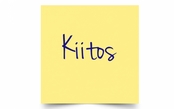
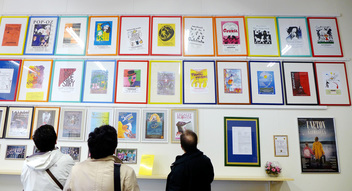
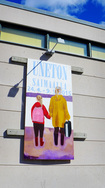

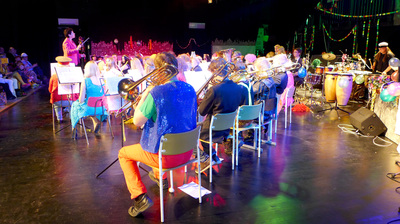

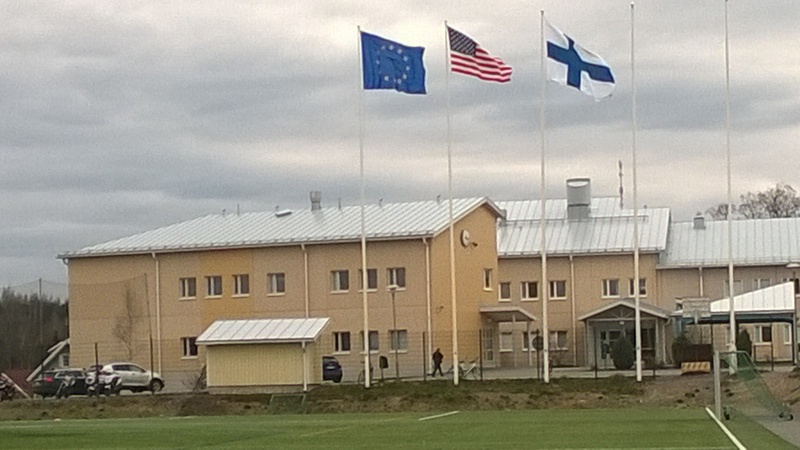
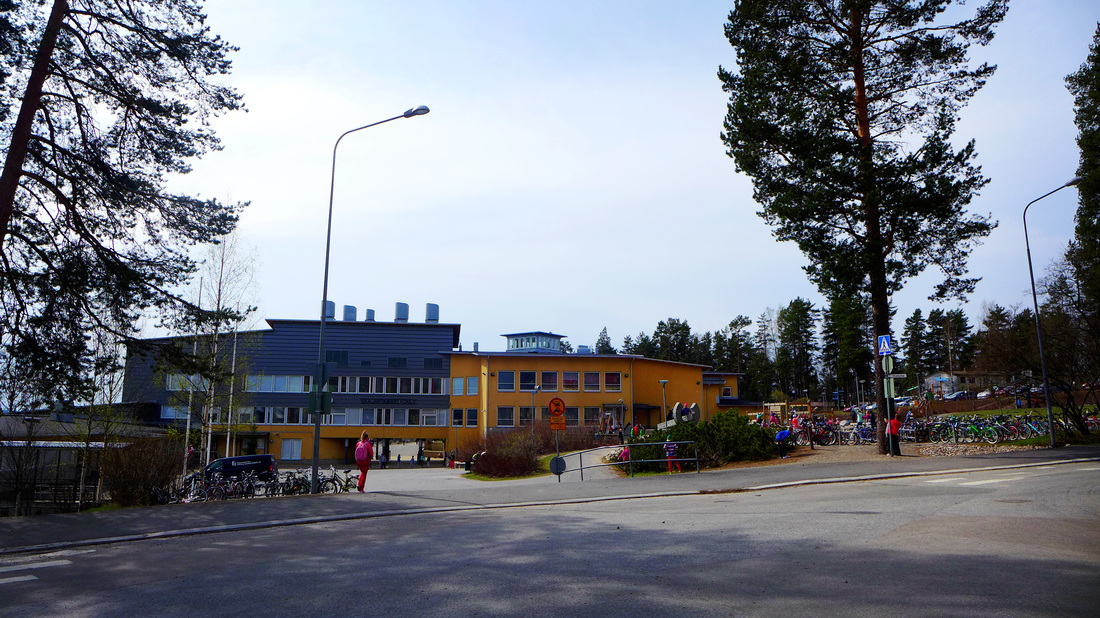
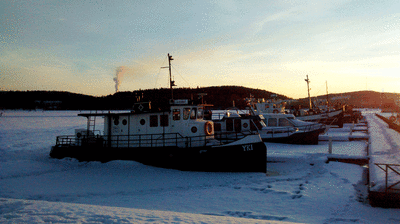
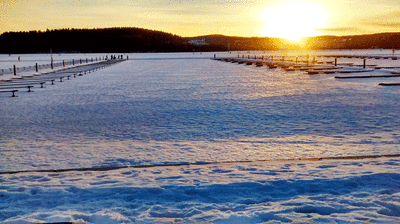


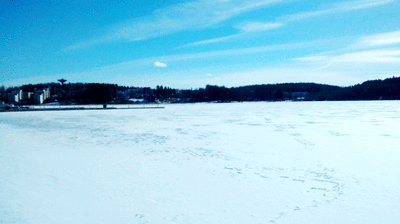

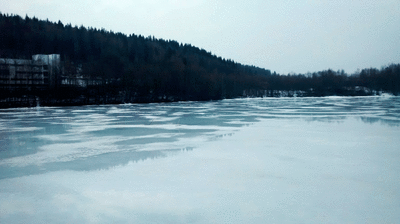

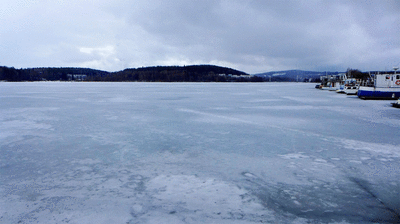
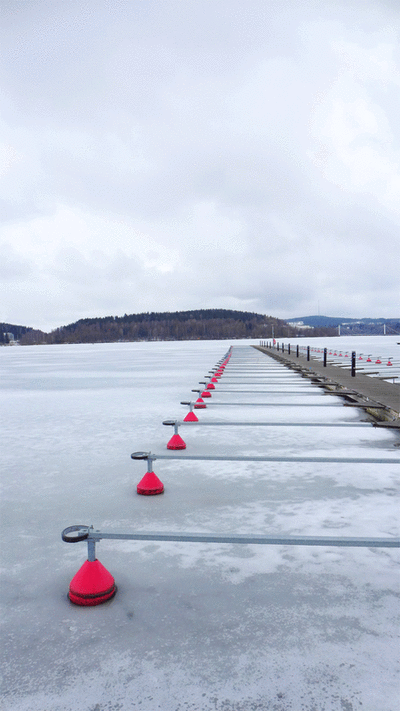
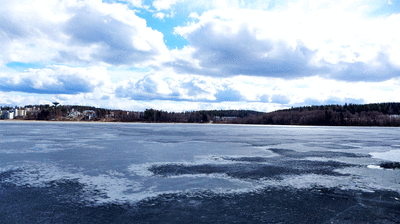
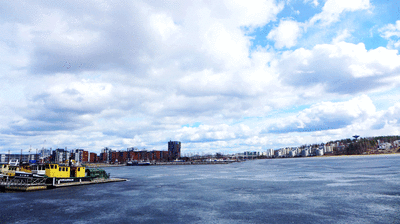
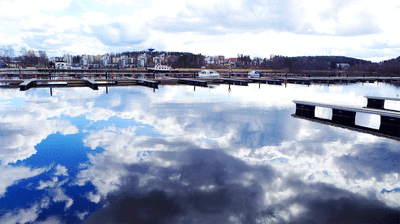

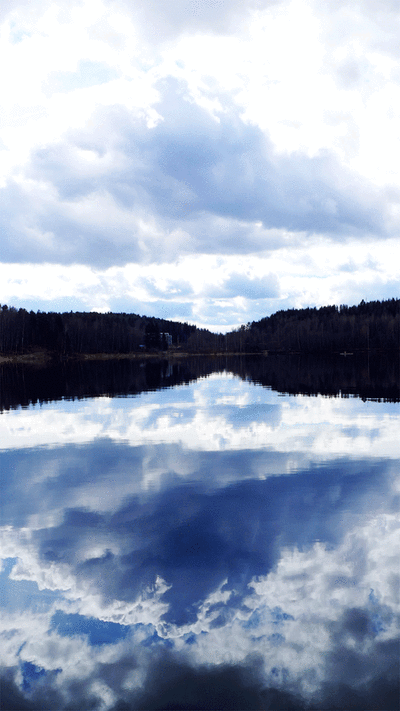

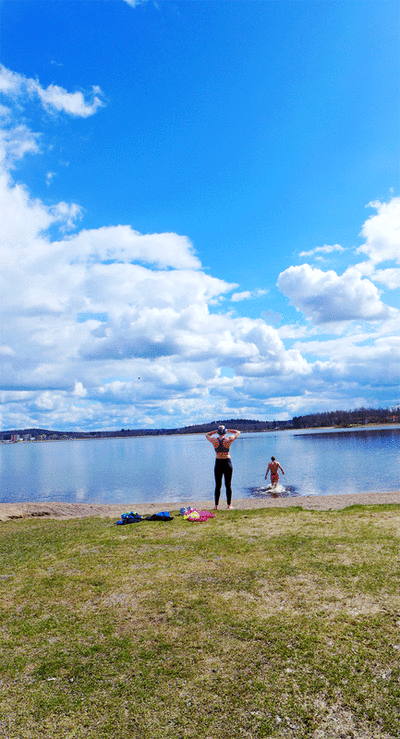


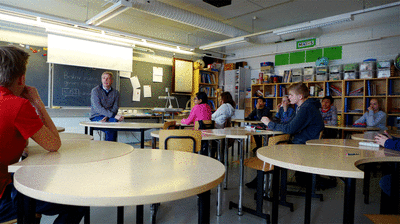
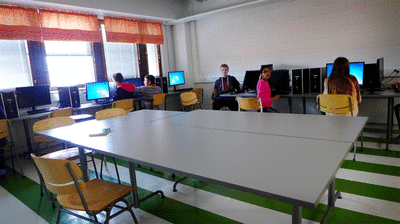



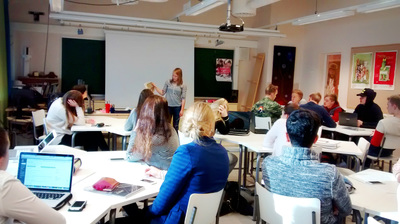

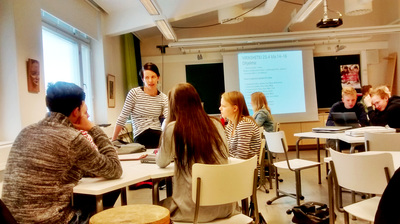
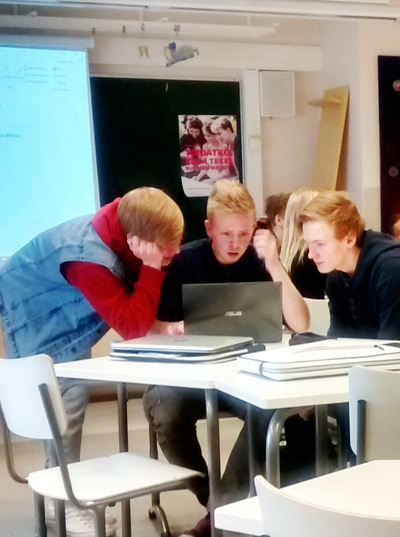

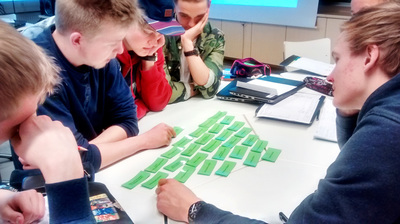



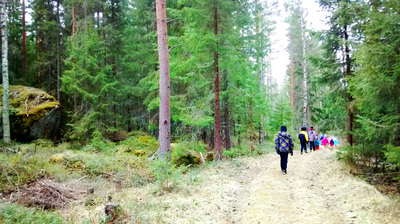


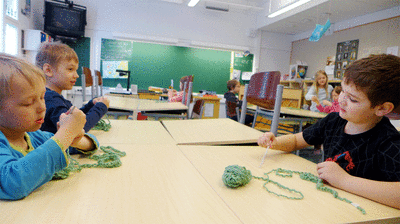

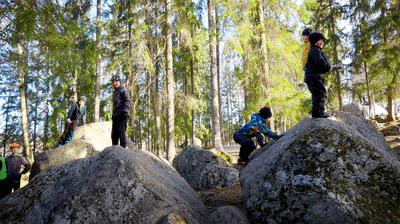
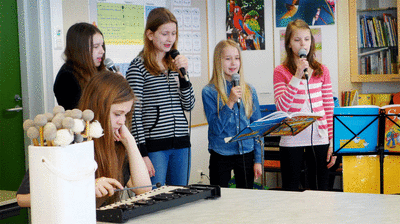




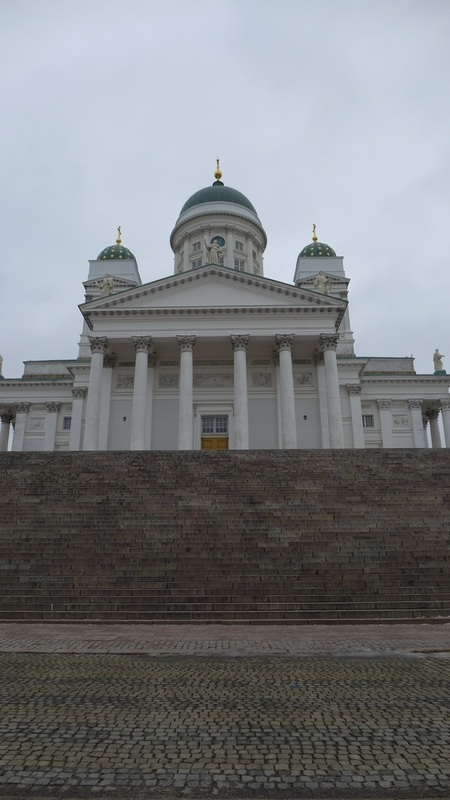

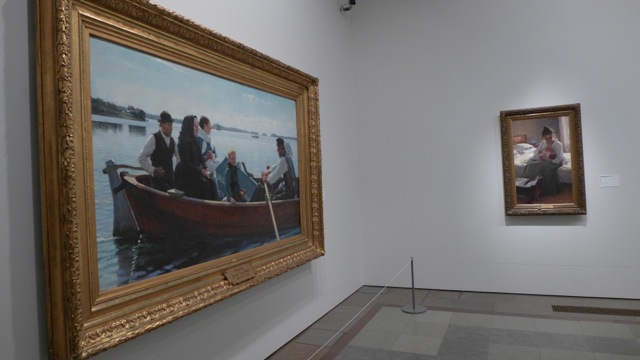
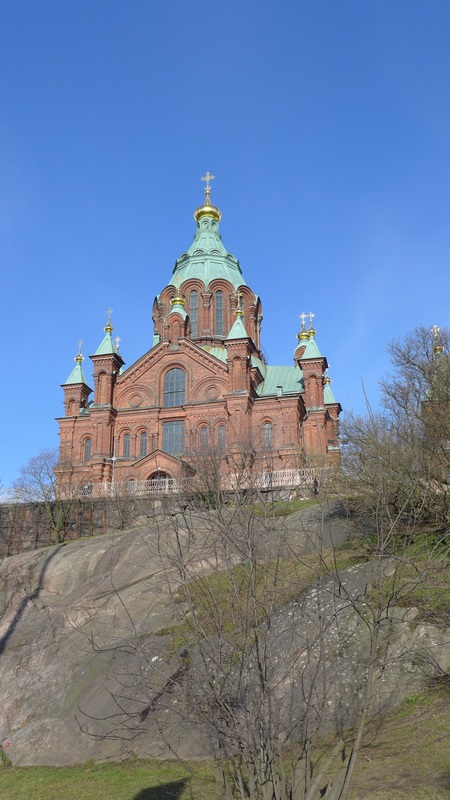
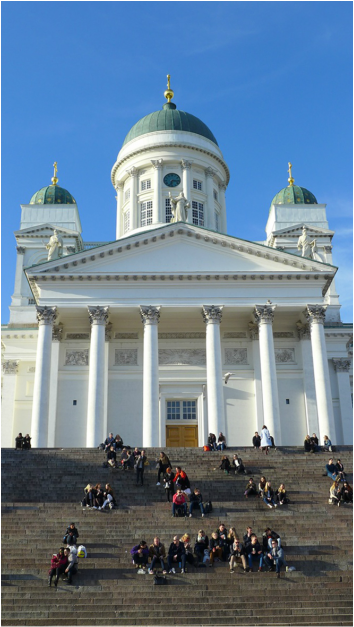

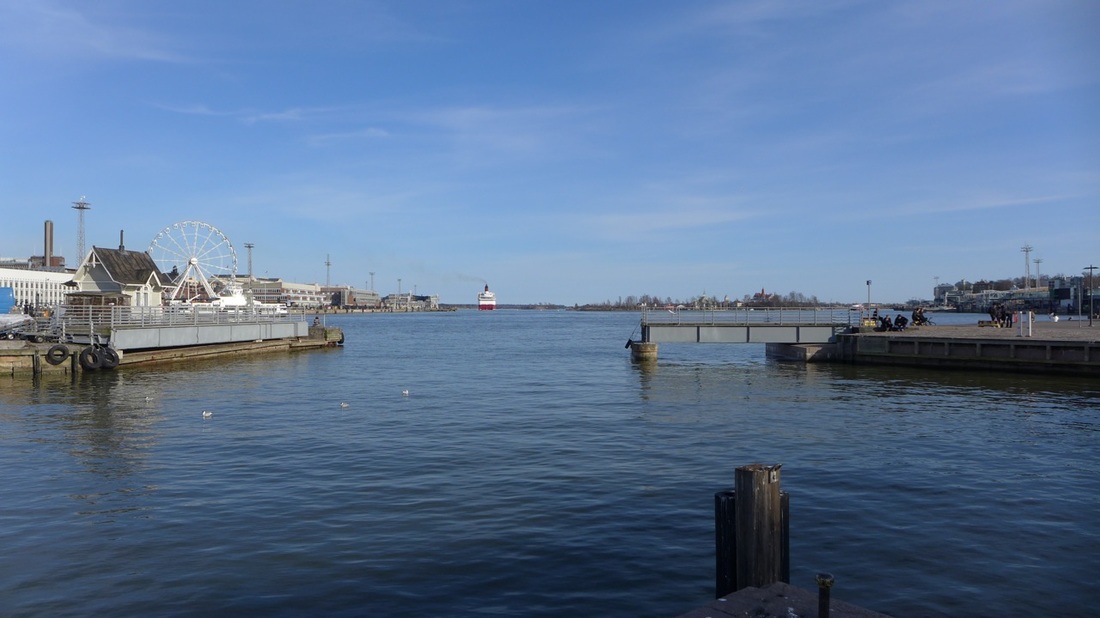
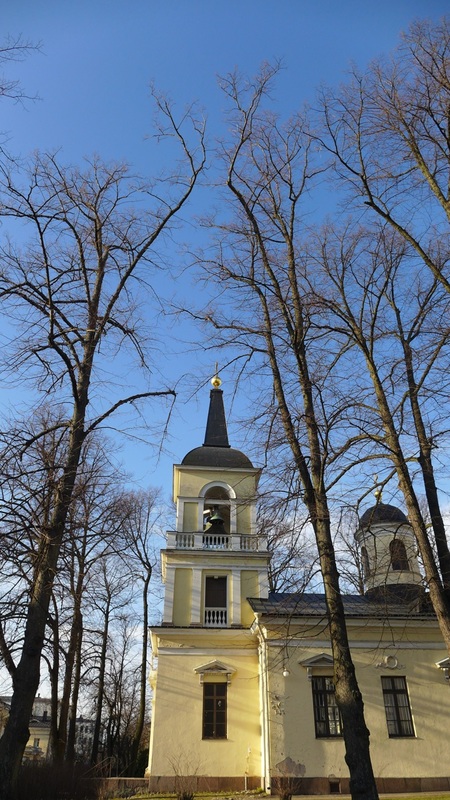
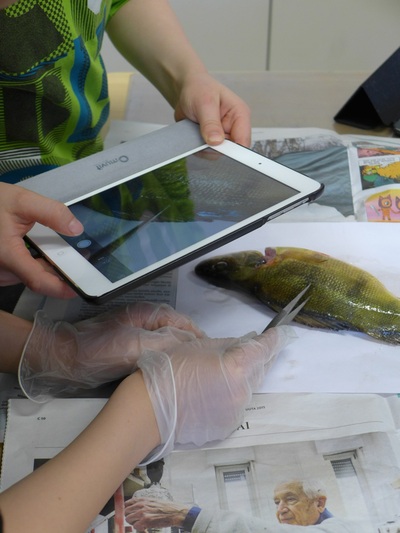

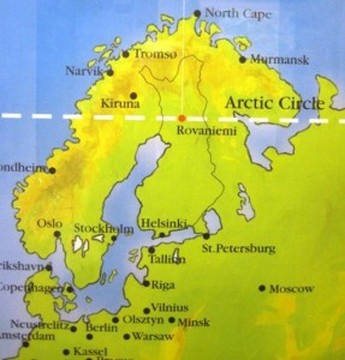


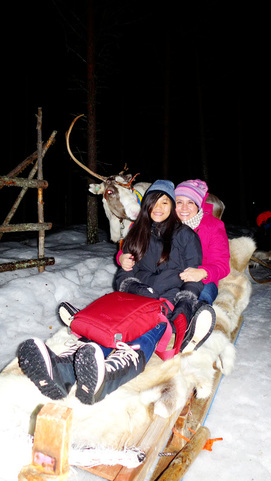

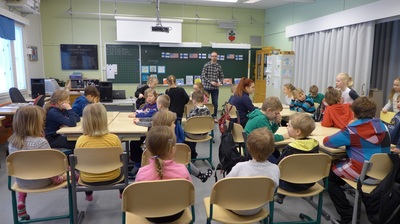



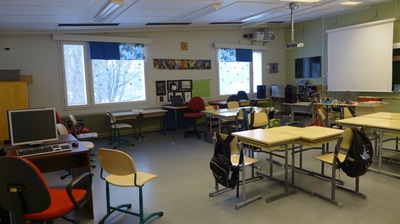

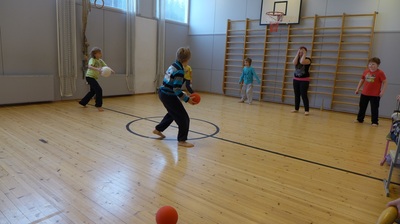
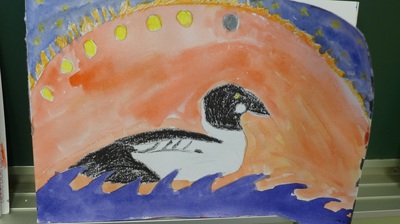

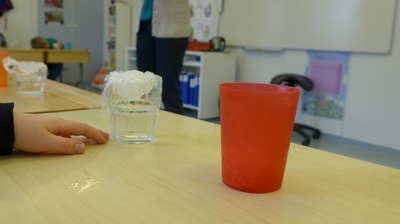
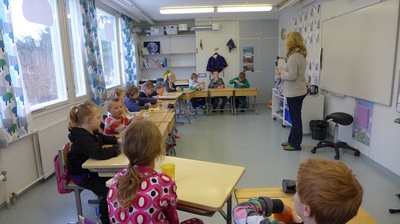


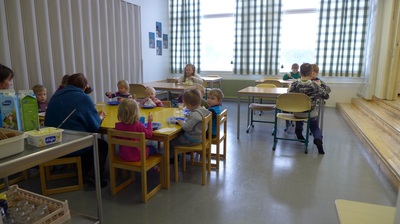

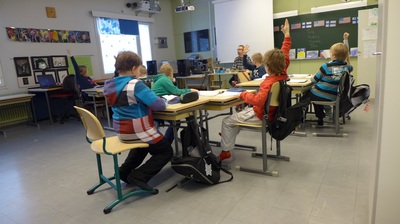

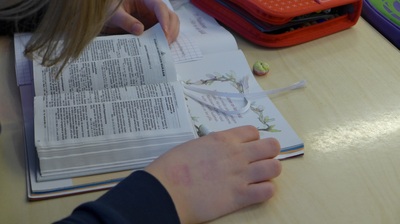
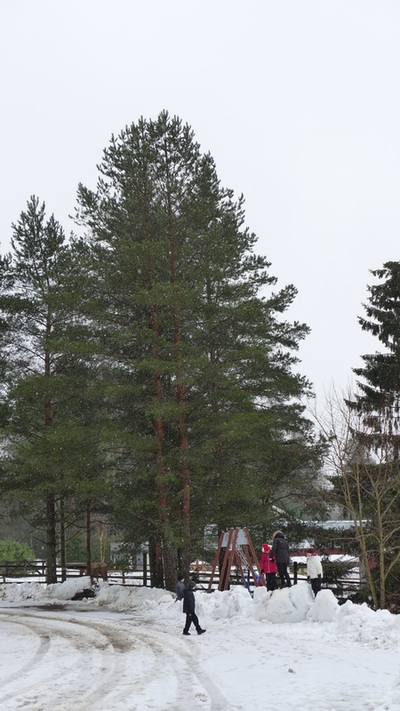
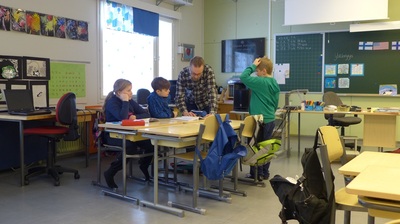
 RSS Feed
RSS Feed